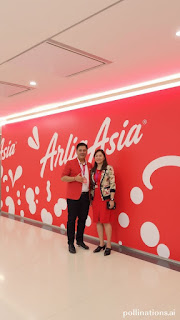Ticker
6/recent/ticker-posts
AirAsia PHL says 7-million passenger goal within reach
July 07, 2025
Here is the rewritten blog post in a polished and professional tone<br><br>**Conservation in Flight A Step-by-Step Guide to Achieving Wildlife Conservation Goals**<br><br>As wildlife conservationists, we know that achieving our goals requires a combination of dedication, perseverance, and strategic planning. Just as AirAsia Philippines aims to reach its target of over seven million passengers by the end of the year, we too must stay focused and motivated to make a meaningful impact in the field of wildlife conservation.<br><br>**Step 1 Setting Realistic Goals**<br><br>To ensure success, it's essential to set realistic goals that are achievable within a specific timeframe. This step is crucial in maintaining momentum and motivation throughout our conservation journey.<br><br>* Start by setting SMART (Specific, Measurable, Achievable, Relevant, and Time-bound) goals that align with your organization's mission and objectives.<br>* Break down large goals into smaller, manageable tasks to avoid feeling overwhelmed.<br>* Regularly review and adjust your goals as needed to ensure they remain relevant and achievable.<br><br>**Practical Tip** Write down your goals and post them in a visible place to serve as a constant reminder of what you're working towards. This will help you stay focused and motivated, even when faced with challenges or setbacks.<br><br>**Common Challenge** Procrastination<br><br>As conservationists, we've all been guilty of putting off tasks until the last minute. However, procrastination can have severe consequences on our projects' success.<br><br>* Identify the root cause of your procrastination (e.g., fear of failure, lack of resources, etc.) and address it head-on.<br>* Break down large tasks into smaller, manageable chunks to avoid feeling overwhelmed.<br>* Set deadlines for yourself and hold yourself accountable for meeting them.<br><br>**Step 2 Building a Strong Team**<br><br>Assembling a team of dedicated professionals is essential in achieving our wildlife conservation goals. A strong team can help us stay organized, motivated, and accountable throughout the journey.<br><br>* Develop a clear understanding of each team member's strengths, weaknesses, and roles.<br>* Establish open communication channels to ensure seamless collaboration and idea-sharing.<br>* Foster a culture of continuous learning and professional development to keep your team up-to-date with the latest conservation techniques and best practices.<br><br>**Step 3 Identifying Key Stakeholders**<br><br>Building relationships with key stakeholders is crucial in achieving our wildlife conservation goals. These stakeholders can provide valuable support, resources, and expertise to help us succeed.<br><br>* Identify local communities, government agencies, NGOs, and other organizations that share your organization's mission and objectives.<br>* Develop strong relationships with these stakeholders through regular communication, collaboration, and mutual respect.<br>* Leverage their expertise, resources, and networks to amplify your impact and achieve greater conservation outcomes.<br><br>**Step 4 Developing Effective Strategies**<br><br>Developing effective strategies is critical in achieving our wildlife conservation goals. A well-planned approach can help us stay focused, motivated, and accountable throughout the journey.<br><br>* Conduct thorough research and analysis to identify the most pressing conservation issues.<br>* Develop tailored strategies that address these issues and align with your organization's mission and objectives.<br>* Regularly review and adjust your strategies as needed to ensure they remain effective and relevant.<br><br>**Step 5 Measuring Progress and Accountability**<br><br>Monitoring progress and staying accountable is essential in achieving our wildlife conservation goals. Regular evaluation and reporting can help us identify areas for improvement, track our impact, and make data-driven decisions.<br><br>* Establish clear metrics and indicators to measure your organization's performance and progress.<br>* Conduct regular evaluations and assessments to identify areas for improvement and track your impact.<br>* Use data to inform decision-making and adjust your strategies as needed.<br><br>**Conclusion**<br><br>Achieving our wildlife conservation goals requires a well-planned approach, dedication, and perseverance. By setting realistic goals, building a strong team, identifying key stakeholders, developing effective strategies, and measuring progress and accountability, we can stay focused and motivated throughout our journey.<br><br>Just as AirAsia Philippines aims to reach its target of over seven million passengers by the end of the year, we too can achieve our conservation goals by staying committed to our mission and objectives. Remember, reaching for the stars requires a clear vision, determination, and a willingness to adapt and evolve along the way.<br><br>**SEO Keywords** Wildlife Conservation, AirAsia Philippines, SMART Goals, Team Building, Stakeholder Engagement, Effective Strategies, Progress Measurement, Accountability
Menu Footer Widget
Copyright © - StudyNoteGuru All Right Reserved












0 Comments